Geranium is undoubtedly one of the most common and interesting plants grown on the windowsills of our apartments. Flowering bushes can be found on almost every windowsill. In order for geranium to please with its splendor, it is worth familiarizing yourself with information about the species diversity and the intricacies of flower care at home.
Content
Homeland and history of growing geraniums
Indoor geranium is the vernacular name for pelargonium. Geranium is grown as a street plant. With pelargonium, they are connected by external similarity and belonging to the same plant family. The homeland of the houseplant is the hot land of South Africa. About 80% of the wild species of this flower grow in the Cape Province. In some sources, the birthplace of pelargonium is India in the old fashioned way. However, scientists have proven that they only exported the plant through India.
The flower first came to Europe more than 400 years ago. Triste variety was introduced to England, which has an intense aroma that intensifies at night. Initially, the flower was used as a living room air freshener.
In the XX century, pelargonium became the subject of mass hybridization. Breeders have bred many hybrids that differ in the shape of the flower and leaves. Thanks to active breeding, the color palette of pelargonium, which originally had purple and violet colors, expanded to several dozen flowers. Today, pelargonium is considered one of the most popular indoor plants. In Britain, the Society of Pelargonium and Geranium Lovers operates. The activities of the Company cover the world.
Indoor plant characteristics and species diversity
Pelargonium is a herbaceous plant or shrub of the Geranium family. The plant is a perennial. The flower is characterized by the following botanical features:
- creeping branched stems;
- petiole leaves of various shapes in shades of green;
- single or multi-flowered inflorescences of various colors and shapes.
More than 250 species of plants are known. The following are considered the most common:
- Fragrant. Inflorescences are small, of various shapes and colors. The leaves are very dissected. The surface of the sheet plates is rough to the touch. The color is represented by several shades of green. Leaves are flavored. Depending on the variety, they can emit an aroma similar to the smell of lemon, apple, coconut, etc.
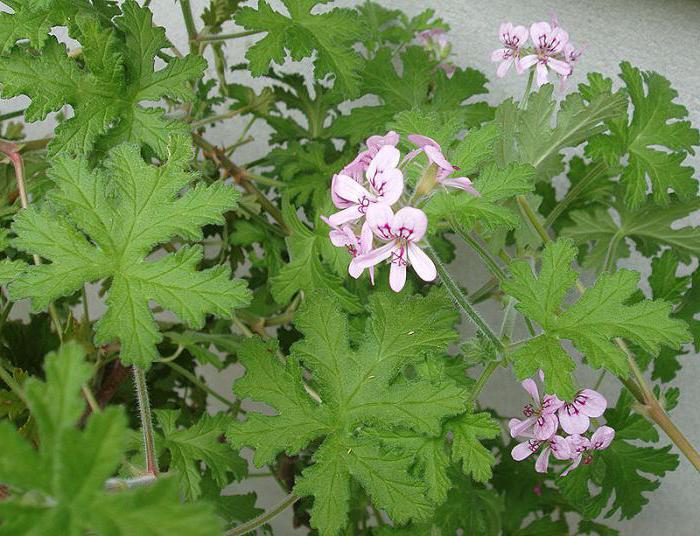
Fragrant geranium - Angel. Inflorescences resemble a pansy flower. The color is varied. Most often it is represented by two shades of the same color or combines 2 different colors. The leaves are heart-shaped, discreet green color.
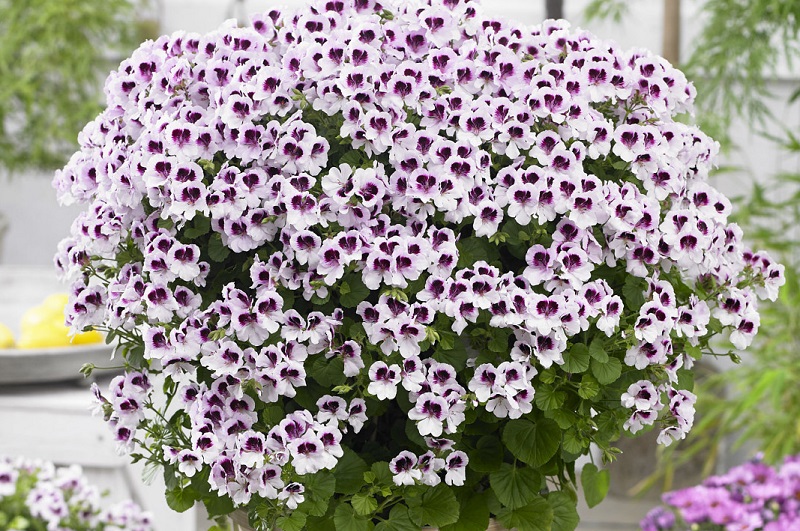
Angel - Unique. Most varieties are terry. The color of the petals is very bright, various shades. It is characterized by strongly dissected leaf plates. The color of the plates is also very bright.
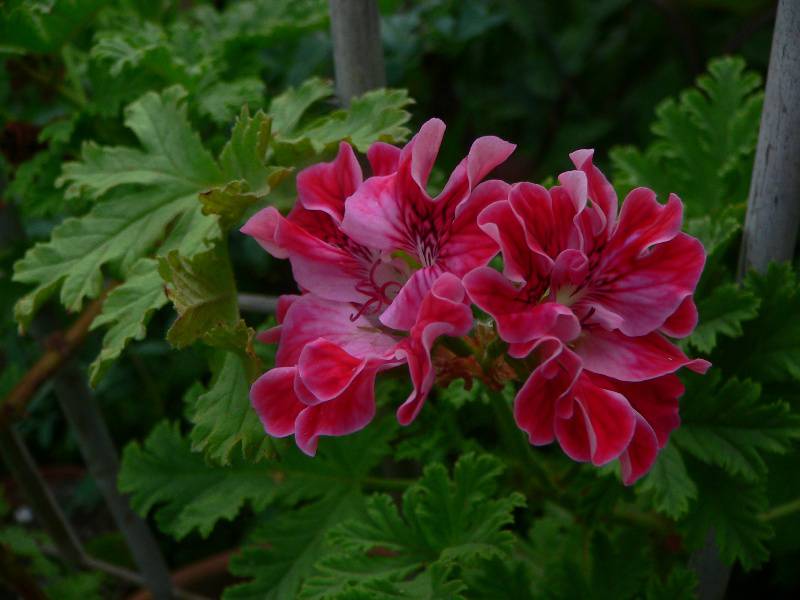
Unique - Succulent. Most varieties are terry. The color of the petals is very bright, various shades. It is characterized by strongly dissected leaf plates. The color of the plates is also very bright.
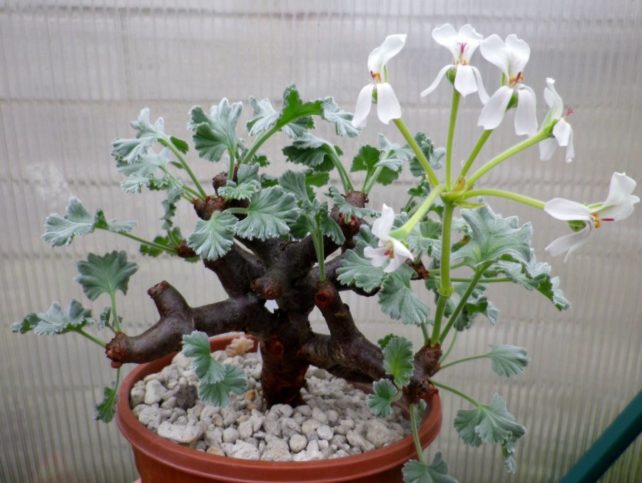
Succulent Geranium - Royal (English).It has many hybrids with a variety of shapes of flowers and leaves. Color is represented by a wide palette of shades. There are both monophonic and motley representatives of the species. It is characterized by a large bush size.
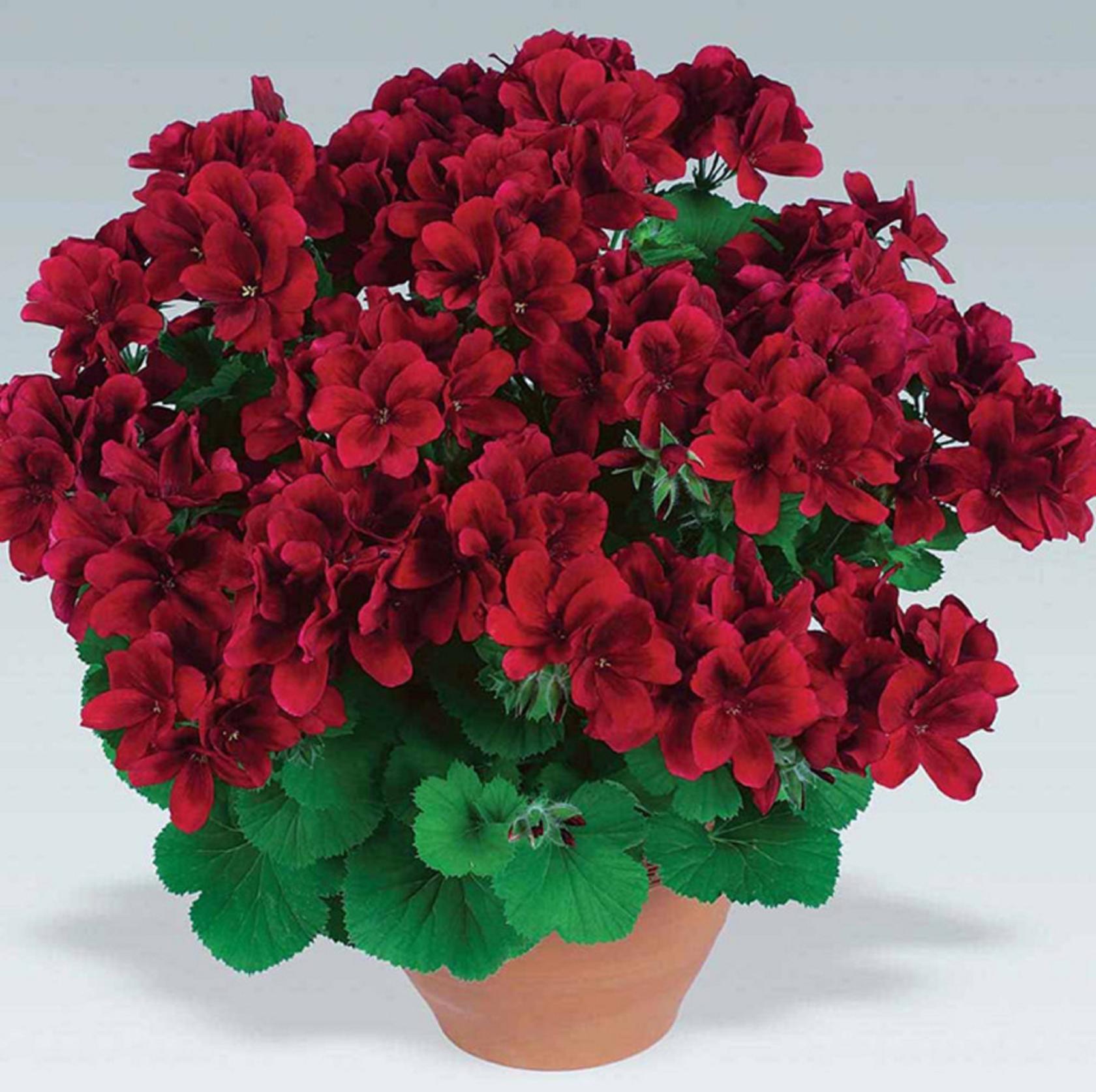
English geranium - Thyroid (Thyroid). It differs in elongated shoots, thanks to which the plant is grown as an ampelous. It has a wide variety variety. Most varieties have a color combining 2 or more colors.
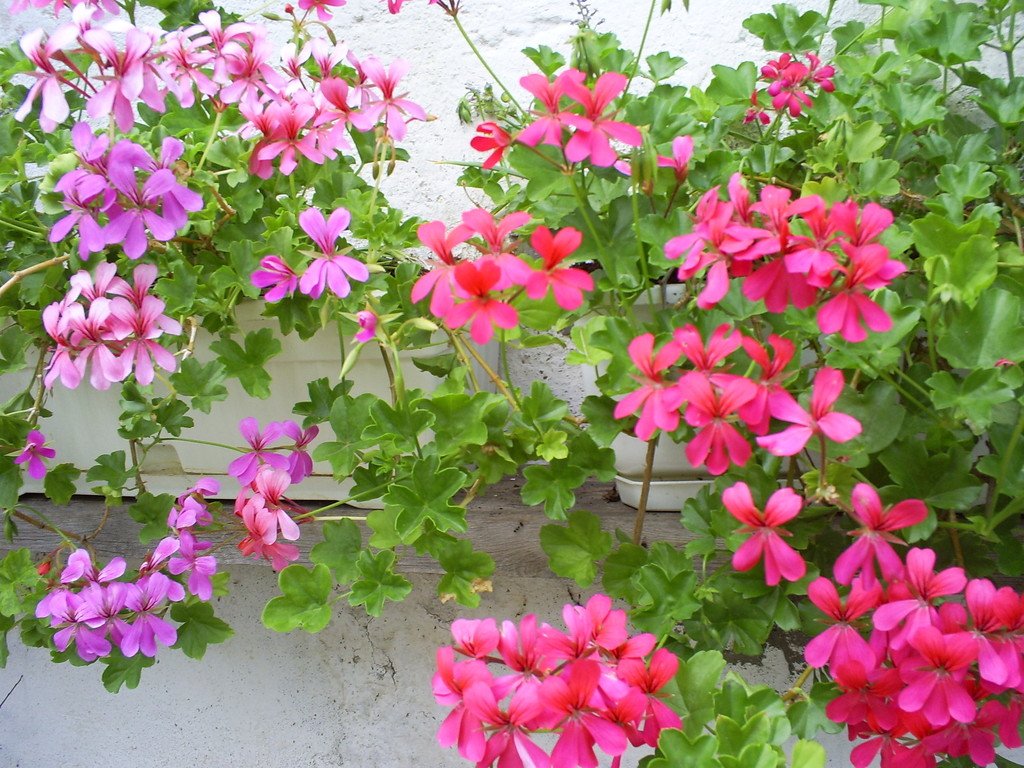
Pelargonium Pelargonium - Blood red. The leaves are round, corrugated. Many varieties have a brownish transverse ring on a green plate background. Bright red flowers are collected by spherical inflorescences. Some hybrids are terry.
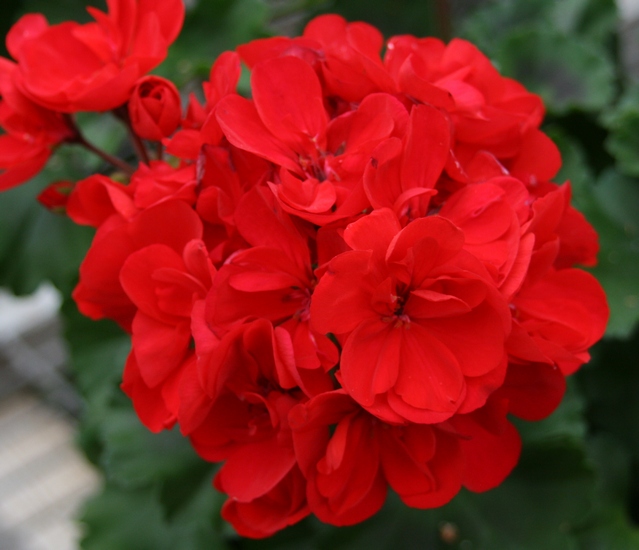
Blood red
Depending on the shape of the flower, geraniums are differentiated into simple and double species. By the type of flower basket, these types of pelargonium are distinguished:
- rosaceae;
- stellate;
- cactus-like;
- tulip-shaped;
- bird eggs;
- speckled;
- cloves;
- phlox.
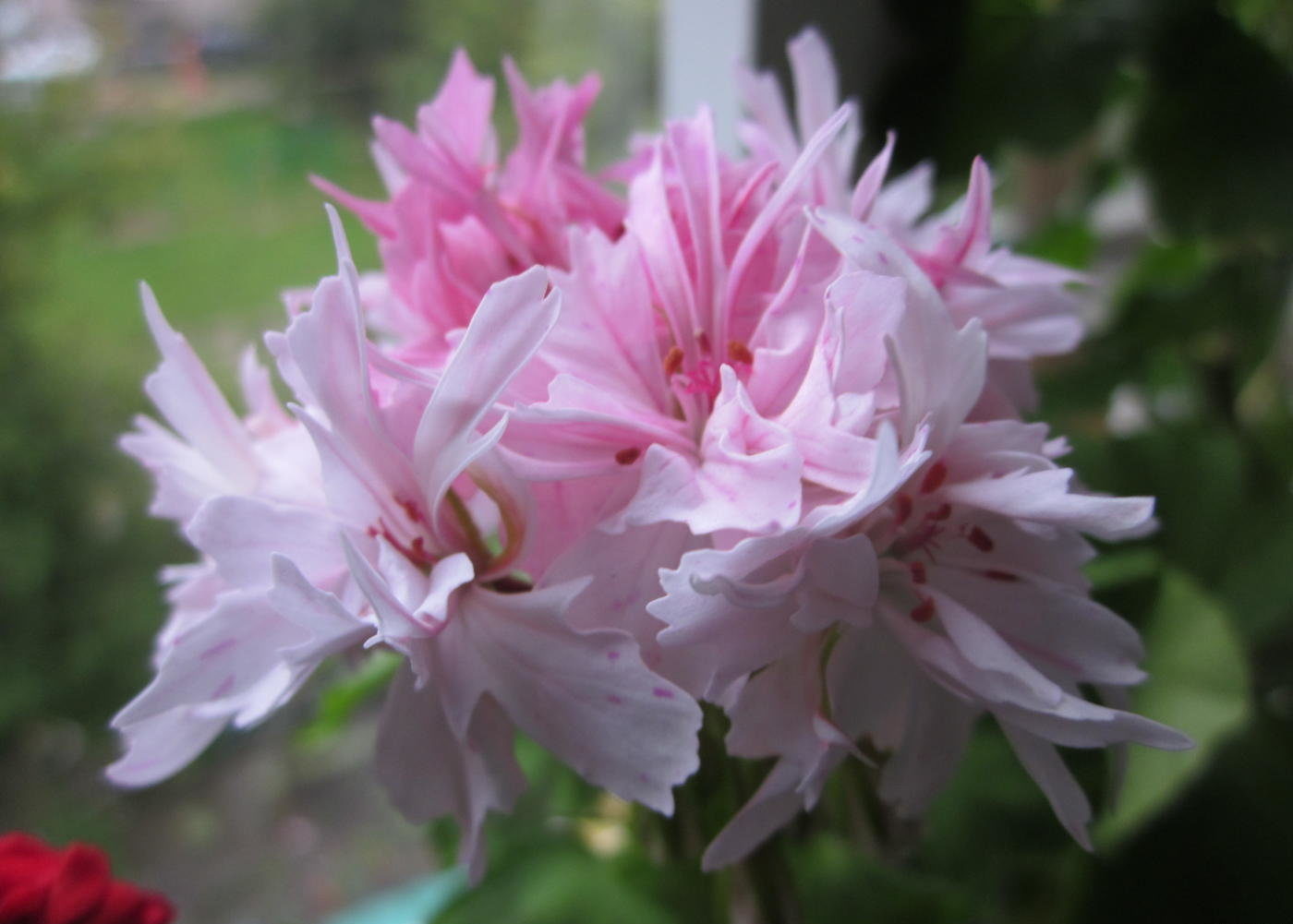
The following plant species are distinguished by the size of the bush:
- Standard (above 25 cm).
- Dwarf (15-25 cm).
- Miniature (up to 15 cm).
Some types of pelargonium can be found in garden plots. Growing this culture on a flower bed is permissible only in the warm season. For the winter, flowers are transplanted into pots.
The secrets of home care for geraniums for beginners
Geranium cannot be called a moody plant, so it is not difficult for experienced gardeners to grow a flower at home. For beginner gardeners, there are several recommendations for caring for this plant.
Lighting
Pelargonium requires bright diffused light. The optimal length of daylight for a plant is 12 hours. The flower is recommended to be placed on window sills if the windows face west and east. On the south side it should be shaded with a curtain. On the north window or in the back of the room, the flower will need additional lighting with phytolamps.
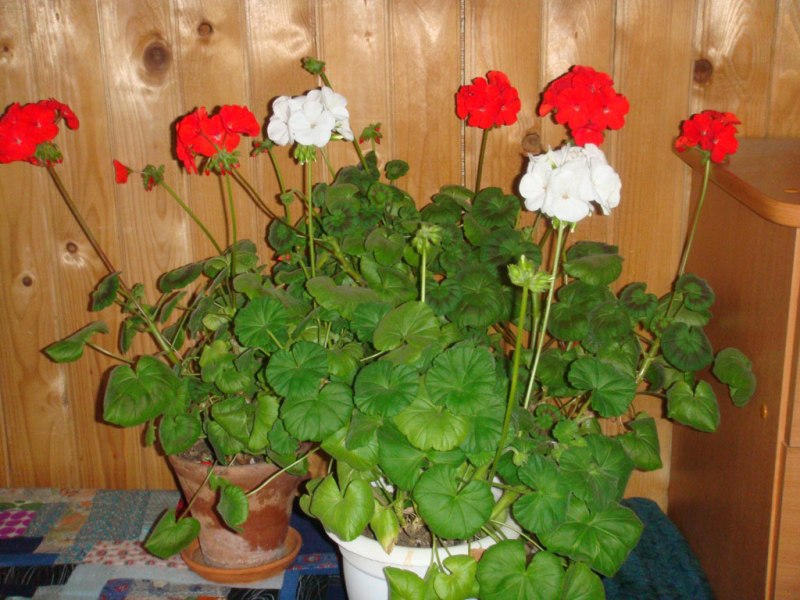
Lighting affects the appearance of geraniums. Lack of light provokes elongation of shoots, shredding of leaves. The flower loses its decorativeness and looks groomed. From the excess of direct sunlight, burns may appear on the leaves.
Temperature and humidity
Growing geraniums provides for compliance with the temperature regime. During the period of active growth, the plant is kept at room temperature. During rest, the temperature is gradually reduced to 15 degrees.
The plant does not require the creation of conditions of high humidity. Nevertheless, they recommend that everyone spray the flower and the air around it. This is especially true for varieties with pubescent leaves, from which it is difficult to remove accumulated dust. Spraying is carried out with water to water at room temperature. From household water, an unaesthetic coating may appear on the leaves and petals of the plant.
Watering and feeding
During the growing season, geraniums need plenty of moisture. It is watered as the topsoil dries. Water for irrigation should be warm and settled. It is advisable to use rainwater. Watering is done by the upper method: moisten the soil under the bush. A lack of moisture can cause yellowing of the leaves, and its abundance - the development of rot.
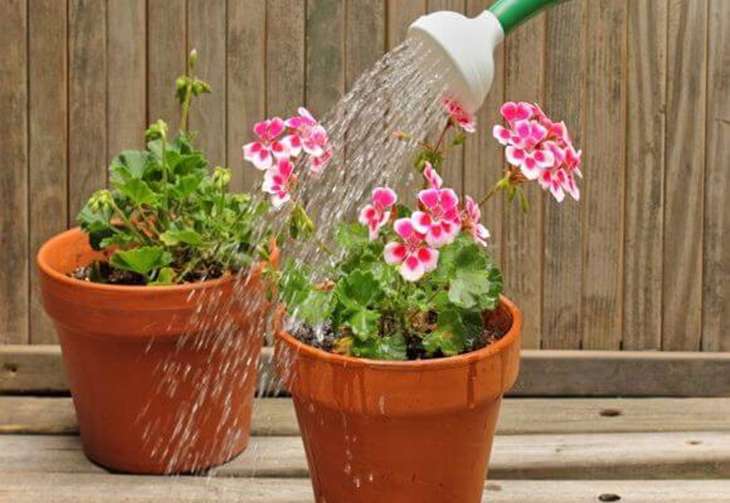
During the period of active growth, the flower needs fertilizer. At this time, he is fed 2 times a month. In winter, geraniums rest, therefore, does not need to stimulate growth. As a feed, mineral fertilizers are used for flowering plants. Allowed the use of universal mixtures. It is desirable that potassium and phosphorus, which contribute to flowering, predominate in the composition. Nitrogen fertilizers are aimed only at building green mass.
Diseases, pests and methods of dealing with them
Pelargonium is rarely ill.Most often, diseases appear as a result of improper care of the flower. The following diseases are considered the most common:
| Title | Reason for occurrence | Symptoms | Treatment |
|---|---|---|---|
| Blackleg | Use of non-sterile tools, reuse of soil and pot. | Blackening of the stem at the base. A few days later putrid mucus appears at this place. | Not treatable. |
| Botritis | Waterlogged soil and poor air exchange. | Gray plaque on all terrestrial organs of the plant. When shaking, showered with dust. Later, the affected parts darken and die. | Removal of all affected parts of the flower and repeated treatment with fungicide. |
| Root rot | Yellowing of leaves and shoots with their further drying. Decay of the root system of the plant. |
Geranium can be affected by an attack of harmful insects. These include the following pests:
- aphid;
- scale shield;
- spider mite.
Aphids can be eliminated by treating the bush with a concentrated aqueous solution of baby or natural laundry soap. Spider mites and scabies are disposed of only with the help of insecticides.
When and how to prune geraniums to form a flower
Geranium needs annual pruning. Without shortening the stems, it stretches, loses its attractiveness. Trimming the plant is recommended in the fall. At this time, the growing season ends, respectively, new leaves no longer appear.
Annual geranium pruning is performed for:
- Stimulating the growth of new shoots.
- Crown formation.
- Stimulation of flowering.
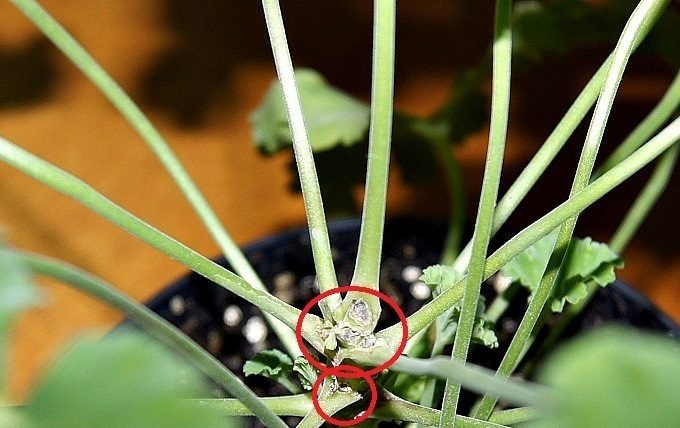
Some types of geraniums require additional pruning, as they develop even during dormancy. Additional pruning is carried out no earlier than spring. During hibernation, the flower is weakened. Winter pruning can strike a plant health. And the shoots cut off at this time are not capable of rooting.
Experts recommend leaving only stems growing from the root on the bush. The axillary shoots must be removed. Only 5-7 leaves are left on the stems, the rest of the shoot is cut off. But even deep pruning cannot harm the plant, since there are tons of sleeping buds on the bare stems.
How to propagate and transplant geraniums at home?
Propagation of room geranium occurs by cuttings, sowing seeds and dividing the mother bush. The following is a description of the action algorithm of each method.
Cuttings
To obtain a new flower from the stem, you must perform the following steps:
- A stalk is formed from the cut stem: 3-5 leaves are counted from the top, the rest is cut with an oblique cut.
- The cuttings are dried in the shade for 2-3 hours.
- The tank is filled with a mixture of turf land, peat and sand in equal parts.
- Place the cut on the handle treated with an antiseptic. At the same place it is rooted in moist soil.
- For the splendor of the bush, you can pinch the top.
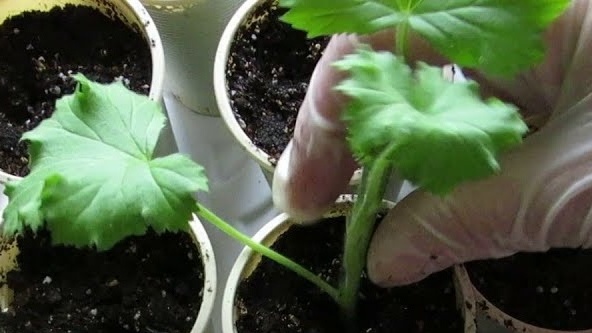
Caring for the cuttings is practically no different from caring for an adult geranium. The only difference is daily spraying up to rooting, which occurs 2-3 weeks after planting. When the stalk releases a couple of full-fledged leaves, it is transferred to a pot filled with soil suitable for geraniums.
Cuttings are the most optimal way to propagate a flower. After trimming, there remains a mass of shoots that can be used as material for cuttings.
Bush division
Reproduction by dividing the bush provides for such actions:
- From the mother bush with a sharp disinfected tool, a part of the rhizome with the shoot is gently cut.
- All damaged parts of the plant are treated with crushed activated or charcoal.
- The cut piece is placed in the ground (peat can be increased if desired).
The baby is taken care of in the same way as an adult plant. If additional peat was used during planting, feeding is introduced no earlier than a month later. The advantage of this method is the speed and almost one hundred percent probability of successful rooting. The disadvantage is a small number of new plants.
Seed propagation
The removal of a new flower from seeds involves the following actions:
- A container with high sides is filled with a mixture of turf land, peat and sand (1: 1: 1).
- Fresh pelargonium seeds (not older than six months) are sown in moist soil. Top seeds do not fall asleep. It’s enough just to “stamp” them with your fingers a little.
- The container is covered with a transparent film and placed in a room with a temperature of 22-25 ℃.

Seedlings need daily spraying and airing for half an hour. The first shoots appear after a couple of weeks. Strengthened pelargoniums dive into separate pots along with a lump of land, so as not to damage the fragile roots.
Seed propagation allows you to get a large number of units. The disadvantage of this method is the risk of losing the variety trait.
Transfer
Geranium is very poorly tolerated transplant. Therefore, a complete replacement of the soil is carried out no more than 1 time in 2 years. The flower is transplanted by transshipment without violating the integrity of the land coma. If a transplant is not planned this year, just a little fresh soil is sprinkled on the flower.
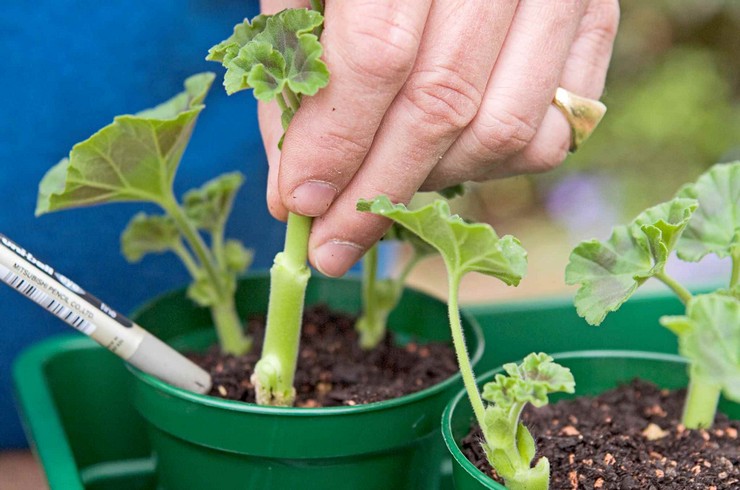
Usually a transplant is performed in the fall. The pot should not be too spacious, otherwise the plant will put all its strength into the development of the root system to the detriment of flowering. The drainage layer is necessarily lined at the bottom of the pot. There is a special soil mixture for geranium, consisting of peat, sand, turf and leaf soil in equal proportions.
Common questions
Indoor geranium is a beautifully flowering indoor plant. Subject to the recommendations for care, growing a flower does not bring trouble. In addition to aesthetic pleasure, geraniums are valued for their ability to purify indoor air and healing properties.

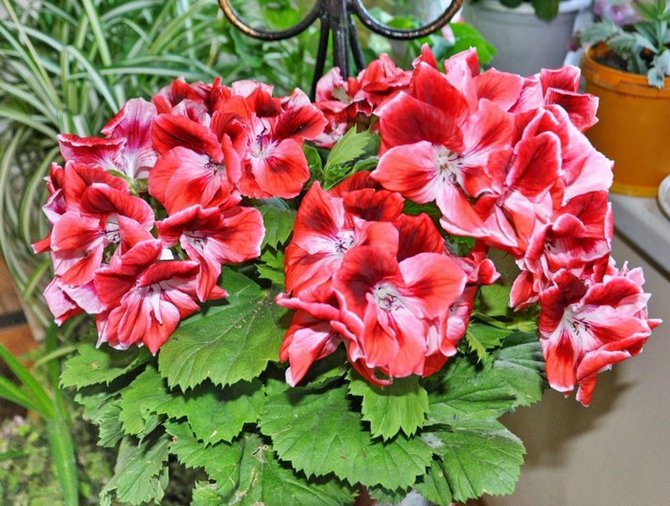

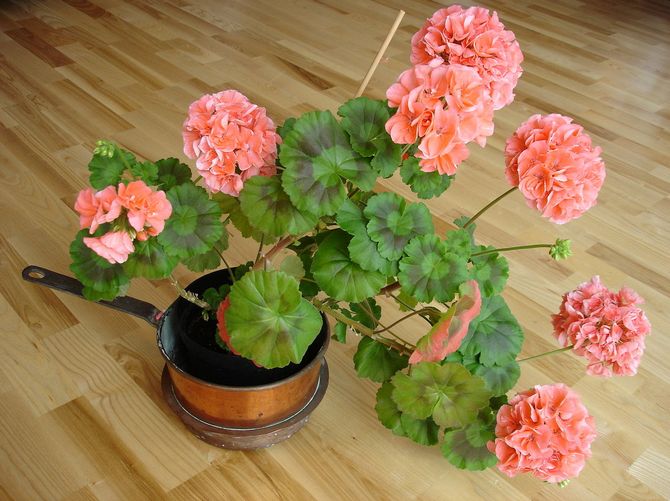



 10 beautiful annuals that bloom all summer
10 beautiful annuals that bloom all summer Sow in the ground, without seedlings: 10 beautiful and unpretentious flowers
Sow in the ground, without seedlings: 10 beautiful and unpretentious flowers Platicodon planting and outdoor care
Platicodon planting and outdoor care Hosta - planting and care in the open ground in the Urals
Hosta - planting and care in the open ground in the Urals